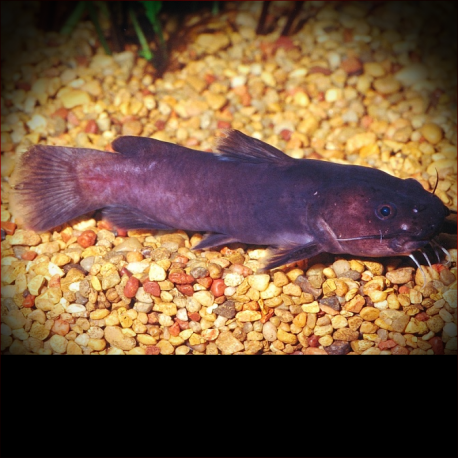More info
Datasheet
| Minimum Tank Size | 70 litres / 18.49 US gallons |
| Maximum Size | 10.0cm / 3.94inches |
| Temperature | 23°C / 73.40°F - 26°C / 78.80°F |
| Hardness | 15-30ºdH |
| pH | 7.5-9.0 |
General Description:
The African Bullhead, scientifically known as Lophiobagrus Cyclurus, is a unique addition to Tanganyikan aquarium communities due to its scarcity in the hobby. With rumors of secreting a potentially poisonous mucous when stressed, it is recommended to keep them in larger aquariums. There are currently only four recognized species of Lophiobagrus, all originating from Lake Tanganyika, where these catfish are endemic.
Aquarium Setup:
For optimal conditions, the African Bullhead should be housed in a Lake Tanganyika biotope setup. The tank should have rocks piled to create caves for shelter, along with open water areas for swimming. Dim lighting can help encourage these catfish to be more active and visible. Ensure water conditions are within a pH range of 7.5-9.0, a temperature range of 23-26°C, and a water hardness of 15-30°dH (see table).
Behaviour:
Despite being capable of consuming very small fish, the African Bullhead generally thrives in Tanganyikan catfish and cichlid communities. They can also be kept in small groups without issues. During the day, they tend to hide among rocks and become more active during nocturnal foraging.
Feeding and Diet:
An omnivorous and versatile feeder, the African Bullhead accepts a variety of foods including frozen, live, and dried options. Their diet is generally unfussy, making them easy to feed in a home aquarium setting.
Reproduction & Dimorphism:
While rarely bred in aquaria, successful breeding has been achieved with the African Bullhead. Breeding pairs lay eggs in rocky caves, with hatching occurring in 4-5 days. Notable parental care behaviors have not been observed, indicating the need to potentially separate the parents or fry into a different tank post-spawning.
Habitat and Distribution:
Endemic to Lake Tanganyika, the African Bullhead thrives in rocky habitats within the lake. They are commonly found seeking refuge among rocks during the day and actively foraging at night.

